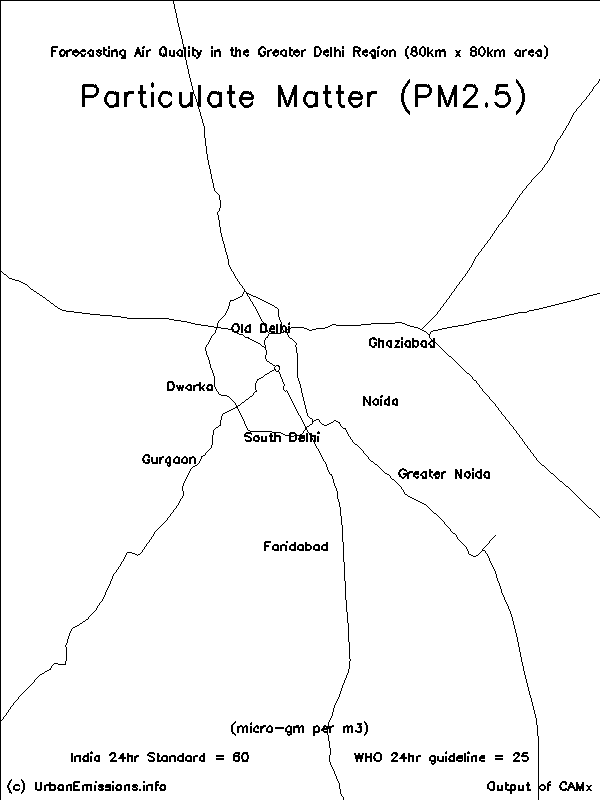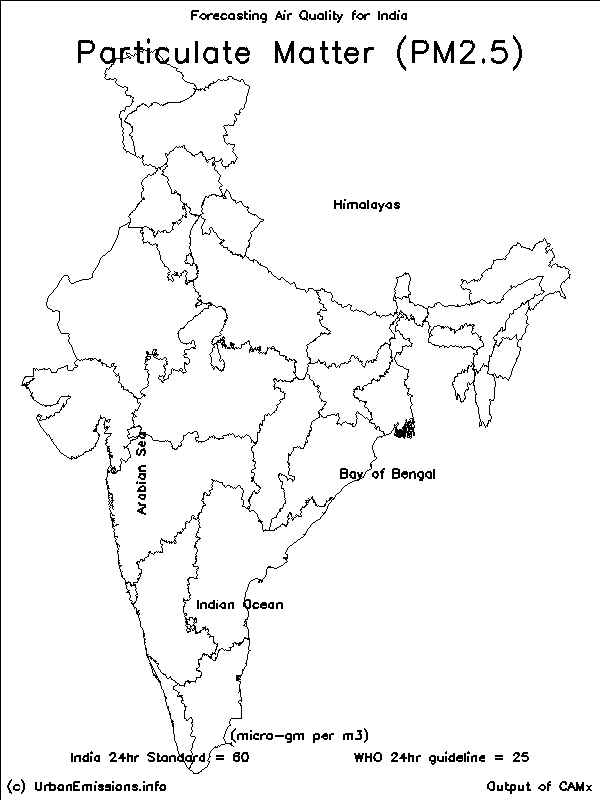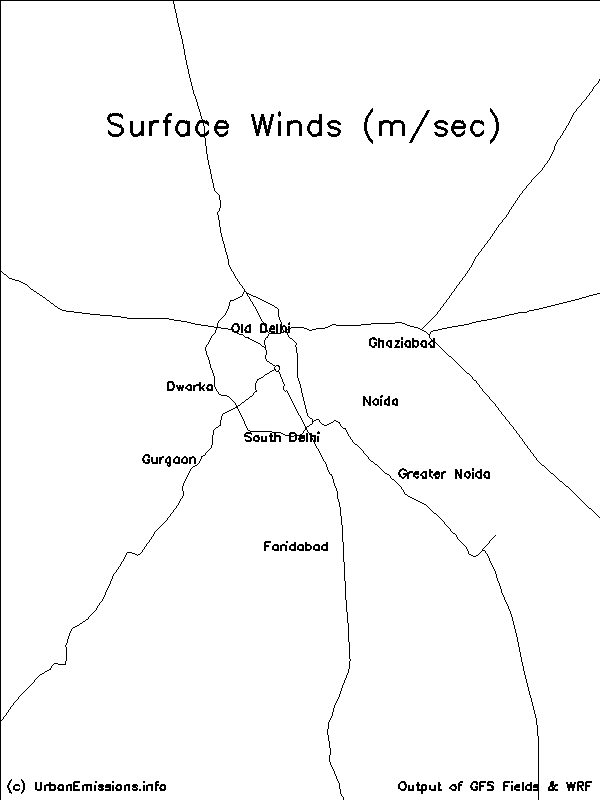- DUST.ERO = wind blown dust from the dry and arid regions, dependent of hourly meteorological conditions
- OPEN.FIRES = open biomass burning (both agricultural lands and forest areas), a seasonal affair linked to dry conditions and agricultural clearing patterns
- TRANS.PASS = contribution of passenger vehicles (2Ws, 3Ws, 4Ws, Taxis, and Buses)
- TRANS.FRGT = contribution of freight vehicles (heavy and light trucks, and non-road vehicles)
- RD.DUST = contribution of re-suspended dust on the roads due to vehicle movement and construction activities
- PP.DGS = contribution of power plants and in-situ diesel generator sets
- INDUS = contribution of industrial activities
- HOUS.HLD = contribution of domestic cooking, space heating, water heating, and lighting
- WST.BURN = contribution of open waste burning
- OTHERS = contribution of aviation, shipping, biogenics, etc..
The modeled particulate pollution in the forecast mode for the next three days is presented, as time series for SO2 and Ozone for the district and as an animation for all PM2.5 covering the modeling domain. Similar animations and daily average concentration maps for all the criteria pollutants are available @ Delhi Air Quality Info
See what is happening at the regional scale, which is conducted as part of the all India air pollution forecasting program, hosted @ https://www.indiaairquality.info. The animation below is from a WRF-CAMx simulation conducted @ 0.25x0.25 degree resolution (approximately, 25km x 25km).
The monitoring data from the DPCC stations reported as an air quality index by AQICN is as follows for one of the stations
The pollution patterns change every hour and every day, depending on the prevalent meteorological conditions - wind speed, wind direction, temperature, and precipitation. Under windy conditions, most of the emissions get dispersed to farther places; Under rainy conditions, most of the emissions get drained out. Want to see how the weather pattern is holding up for the next three days in Delhi. Check out @ https://www.delhiairquality.info. Below is an animation of the anticipated wind speeds and wind directions from the WRF meteorological model - also used by IMD for their forecasts.





4 comments:
Can you point to any validation effort of these forecast fields? Also, what is the confidence level and how far in future that confidence remains in these forecasts?
Hindcast results and the comparison will be hosted at delhiairquality.info. We forecast for 72 hours, which is 100% driven by met forecasts. Confidence level drops significantly after 48 hours (2 days). We run the system every 24 hours, although the GFS fields are available every 6 hours - this is a computational resource question than anything else.
From where can I get air pollution data of new delhi (Jan-Sep 2016 or 2015)? Monthly data would be good.
You can download the data from
DPCC @ http://www.dpccairdata.com/dpccairdata/display/rkPuramView15MinData.php
CPCB @ http://www.cpcb.gov.in/CAAQM/MapPage/frmindiamap.aspx
Open archive @ http://www.openaq.org
Post a Comment